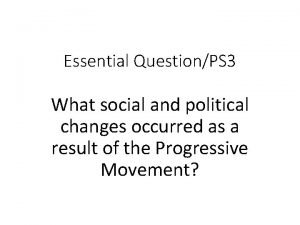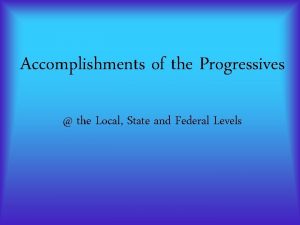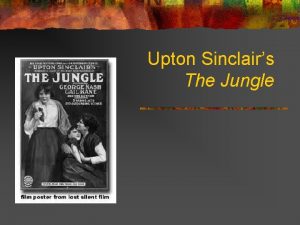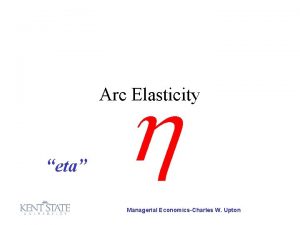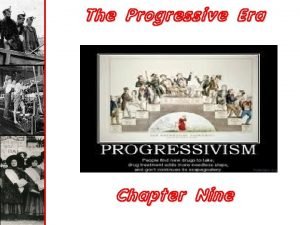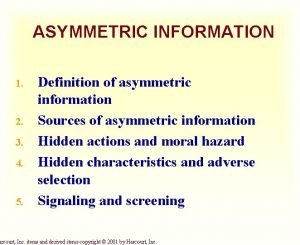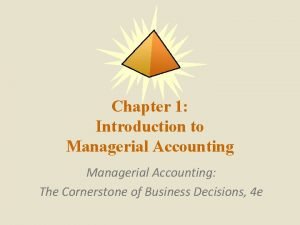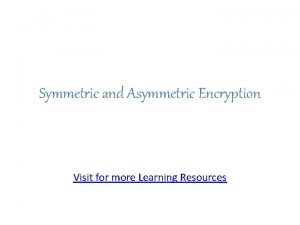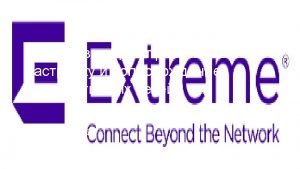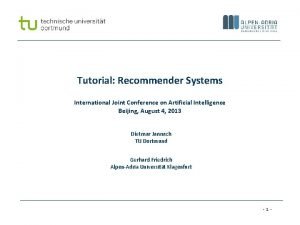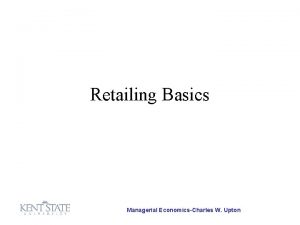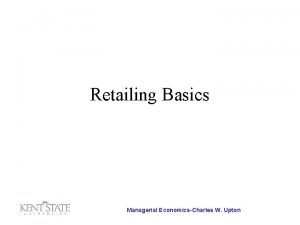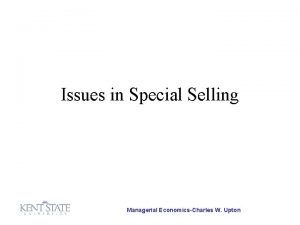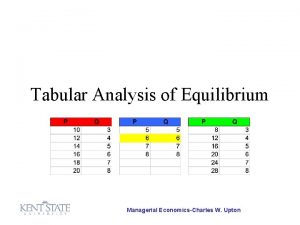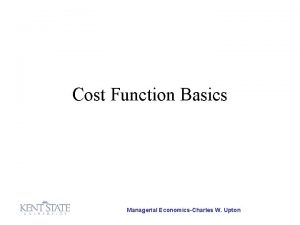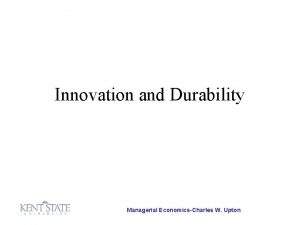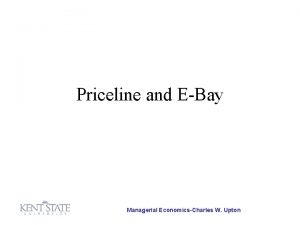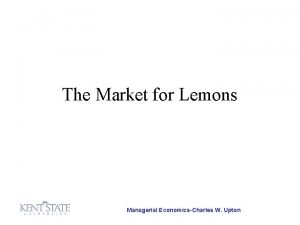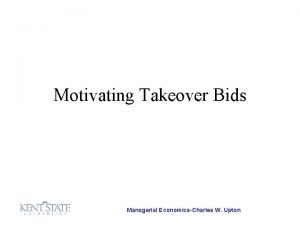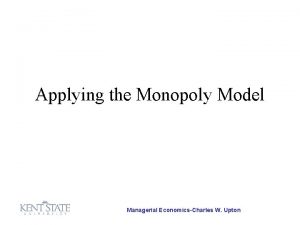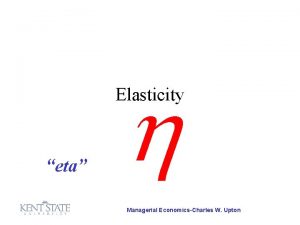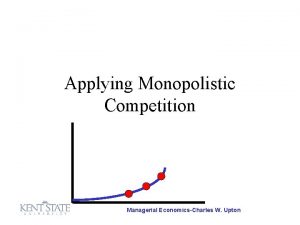Asymmetric Information Managerial EconomicsCharles W Upton Asymmetric Information



















- Slides: 19

Asymmetric Information Managerial Economics-Charles W. Upton

Asymmetric Information • Most economic decisions are made with incomplete information. Asymmetric Information

Asymmetric Information • Most economic decisions are made with incomplete information. • It is important to distinguish between uncertain information and asymmetric information Asymmetric Information

Two Examples • I sell you a ticket to an outdoor concert next July 4. It may or may not be good weather. – This is uncertain information Asymmetric Information

Two Examples • I sell you a ticket to an outdoor concert next July 4. It may or may not be good weather. – This is uncertain information • I want to purchase health insurance – This is asymmetric information Asymmetric Information

The Concert • Suppose the chance of good weather is 5050. Asymmetric Information

The Concert • Suppose the chance of good weather is 5050. • If the weather is good, the ticket will be worth $100; if it is bad, $20. Fair pricing is $60. Asymmetric Information

The Concert • Suppose the chance of good weather is 5050. • If the weather is good, the ticket will be worth $100; if it is bad, $20. Fair pricing is $60. • Neither you nor I has any particular insight into the weather Asymmetric Information

The Health Policy • Half the population is a good health risk, while the other half is a bad risk. For good risk patients, the right charge is $1, 000; for bad risks, $10, 000. • How should the company price the policy? Asymmetric Information

Pricing the Policy • While the company does not know who is a good and bad risk, people have a pretty good idea of their health. – This is asymmetric information. Asymmetric Information

Pricing the Policy • While the company does not know who is a good and bad risk, people have a pretty good idea of their health. • If the company prices at $5, 500, many of the good risks will decline insurance. Asymmetric Information

Pricing the Policy • While the company does not know who is a good and bad risk, people have a pretty good idea of their health. • If the company prices at $5, 500, many of the good risks will decline insurance. • In the extreme case, all good risks will decline and the company will be selling policies at $5, 500 which cost $10, 000 to service. Asymmetric Information

Pricing the Policy • While the company does not know who is a good and bad risk, people have a pretty good idea of their health. This is the classic • If the company prices at $5, 500, many of the good problem risks will“lemon” decline insurance. • In the extreme case, all good risks will decline and the company will be selling policies at $5, 500 which cost $10, 000 to service. Asymmetric Information

Other Cases • You want to switch jobs. – You know more about your reasons than potential employers Asymmetric Information

Other Cases • You want to switch jobs. – You know more about your reasons than potential employers • You want to borrow money – You know financial information not available to banks Asymmetric Information

Used Cars • You are thinking about buying a used car. – The seller knows whether it is a lemon or not. – All you know is that he knows more than you. Asymmetric Information

Used Cars • You are thinking about buying a used car. – The seller knows whether it is a lemon or not. – All you know is that he knows more than you. • You sell a used car which is not a lemon. – Potential buyers understand the issue. – Your assurances that the car is good will not be taken at face value. Asymmetric Information

Used Cars • You are thinking about buying a used car. – The seller knows whether it is a lemon or not. – All you. We know is that he knows more than will develop a model inyou. • You sell a usedthe car next whichlecture is not a lemon. – Potential buyers understand the issue. – Your assurances that the car is good will not be taken at face value. Asymmetric Information

End © 2004 Charles W. Upton Asymmetric Information
 Wes upton
Wes upton Upton sinclair
Upton sinclair What was the jungle by upton sinclair about
What was the jungle by upton sinclair about Upton sinclair accomplishments
Upton sinclair accomplishments Upton hall school fcj
Upton hall school fcj Concrete jungle upton sinclair
Concrete jungle upton sinclair Upton hall entrance exam papers
Upton hall entrance exam papers Charles upton
Charles upton What scandalous practices did upton
What scandalous practices did upton Upton lake christian school
Upton lake christian school Asymmetric information diagram
Asymmetric information diagram Asymmetric information diagram
Asymmetric information diagram Asymmetric information game theory
Asymmetric information game theory Chapter 1 managerial accounting
Chapter 1 managerial accounting Asymmetric key authentication
Asymmetric key authentication Symmetric encryption advantages
Symmetric encryption advantages Asymmetric encryption java
Asymmetric encryption java Asymmetric communication
Asymmetric communication Asymmetric vlan
Asymmetric vlan Asymmetric dominance effect
Asymmetric dominance effect


